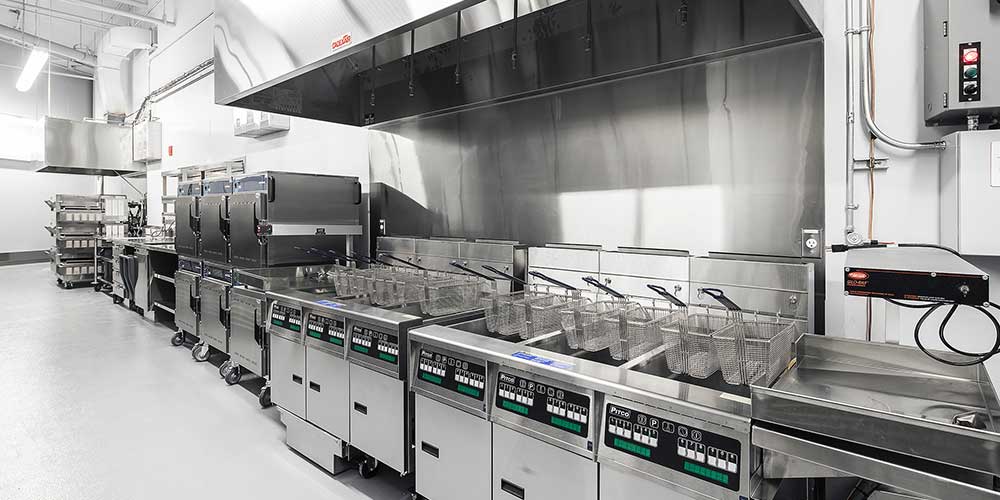
In December 2021, modifications will be made to the Quebec Construction Code, Chapter I.1 – Energy Efficiency of Buildings and National Energy Code of Canada for Buildings 2015.
These new norms clarify the technical requirements concerning the conception and construction of new energy-efficient buildings, expansion, and public pools in Quebec.
It is estimated that these new requirements will improve the overall energy performance of buildings by 27.9%, on average, relative to the existing energy-efficient requirements in effect in Quebec since 1983.
One of the most significant modifications concerns heat recovery from heating, ventilation, and air-conditioning (HVAC) systems, including commercial kitchen hoods.
This article summarizes the modifications concerning commercial hoods.
Modifications to the Point 5.2.13.1.2
Modifications to the Quebec Construction Code, Chapter I.1 – Energy Efficiency of Buildings, and a modified version of the National Energy Code of Canada for Buildings 2015 are available in a document published by the NRC in collaboration with the Régie du bâtiment du Québec.
Point 5.2.13.1.2 of the National Energy Code of Canada for Buildings 2015 says about the commercial cooking ventilation system:
2) The installation of commercial cooking exhaust air systems with a cumulative flow of more than 2360L/s shall comply with one of the following requirements:
- At least 50% of the airflow rate necessary to offset the cooking exhaust rate shall come from available transfer air, in L/s, established using the following equation: Available transfer air = Da – Dw – Dewhere
Da = outdoor airflow entering the building, excluding the make-up outdoor airflow directly serving the kitchen, in L/s,
Dw = airflow extracted from washrooms, in L/s, and
De = outdoor airflow to offset other exhaust equipment, in L/s (see Note A-5.2.13.1.(2)(a)), - At least 75% of the cooking exhaust rate shall come from an exhaust demand air system that shall:
- detect cooking emissions (see Note A-5.2.13.1.(2)(b)(i)), and
- reduce to at least 50% exhaust and make-up flows in the absence of cooking emission, or
- At least 40% of the sensible heat shall be recovered over at least 50% of the cooking exhaust rate by a heat-recovery unit designed for that purpose.
What Do These New Norms Mean?
What do these new norms mean in English? Simply put, all buildings whose construction begins after December 27, 2021, and where kitchens have more than 5,000 CFM must comply with one of the following three criteria:
- More than 50% of the replacement air of the building must come from transfer air. This implies that half of the air must come from places other than the kitchen. This option is strictly for buildings with a big surplus of outdoor air compensation, which is relatively rare.
- Have at least 75% of airflow connected to an intelligent hood system and which can lower the airflow by at least 50%. This criterion implies installing a thermal sensor, a presence sensor, and a variable speed fan.
- 40% of the sensible heat must be recuperated on 50% of the discharge airflow rate. This implies the installation of a heat-recovery ventilator (HRV), which is rather expensive.
The Cadexair Solution
To comply with these new norms, the most simple and inexpensive solution is point B, which requires having an intelligent hood system. This solution eliminates energy loss at the source.
Cadexair fabricates the D-Tech Variable System. This intelligent system is connected to sensors installed in commercial hoods. These sensors are able to anticipate cooking activity and to adjust the evacuation flow and supply of air accordingly.
The motion sensor detects the approach of personnel. This detection by anticipation allows the ventilation system to start before there are vapour fumes. The range of coverage of this sensor can be adjusted according to your settings.
The temperature sensor is located in the upper wall of the hood. As the temperature rises, the evacuation demand increases.
In total, the degree of activity is measured according to the temperature, the activity by a motion sensor in the cooking zone, and a pre-established schedule. Each motion and temperature sensor is entirely programmable for sensitivity ranges, acceleration speed, and the programming of operation hours at low and high flow.
This technology respects environmental norms and will save you money, as much on heating as electricity. Also, since the system functions only when necessary and at variable speed, wear and tear is lessened and lifespan is lengthened.
At Cadexair, we have more than 35 years of research and experience. Our team fabricates the largest and most complex systems in the country. Our years of experience have shown us that we must anticipate the arrival of smoke and not measure its density with optical sensors.
Our system is equipped with many detection and modulation options. It is a well-tested technology that is 100% customizable, fast, inexpensive, and allows you to update existing systems.
In addition to selling components for commercial kitchen hood systems, Cadexair provides maintenance, preventive maintenance, and cleaning.
Our products are built according to the highest quality and engineering norms and comply with UL and CSA standards. Also, in terms of system maintenance and cleaning, we are IKECA certified and trained, and are Contractor Check certified.
For a system that is high performance, inexpensive, and durable, trust Cadexair!

